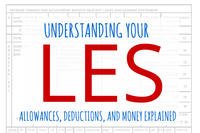This is one of the best times to refinance your home. Interest rates have fallen to their lowest rates in years — 30-year fixed rate mortgages decreased to 4.89 percent from 5.07 percent, and the 15-year fixed rate mortgages rate dropped to 4.63 percent from 4.67, reports the Mortgage Bankers Association (MBAA). In fact, more homeowners are applying to refinance their homes this year as refinance activity increased to 85.3 percent from 79.8 percent in the first week of January 2009.
What's more, some mortgage brokers believe that the interest rates will continue to fall to as low as 3.5 percent in 6 months, according to the Denver Daily News.
But refinancing isn't for everybody. If have bad credit, have missed mortgage payments, or are in danger of losing your home to foreclosure, you need not apply. In the wake of the sub-prime mortgage meltdown, lenders tightened restrictions for refinancing. For example, some lending companies now require homeowners to have good credit scores, which usually are 700 and above, and have 20 percent equity in their home to refinance. Additionally, you'll be asked to document that you will be able to repay their loan, reports Forbes.
"The idea of people growing into their mortgages is going to be harder to do over the next couple of years," says Tom Kelly, spokesman for JPMorgan Chase, in the Forbes report. "It's back to a more conservative way."
I know you're thinking, "Finally some good news about the housing market!" But before you run off to your mortgage broker to discuss refinancing, there are six things Forbes.com recommends you do before you start the process:
1.) Break even
It helps borrowers weigh the costs of applying for a new loan (the points, including appraisal and closing costs), the monthly savings from lower payments, and the length of time they intend to stay in that home. One rule of thumb is that it's a good time to refinance when the new rates are 1 percentage point below the existing rates.
2.) Draw the line
If the costs of a new loan would be recouped in two years, but you plan on staying there only another year, it may not make economic sense to refinance. If you feel insecure about losing a job in the near future, it may make sense to refinance to a lower payment now before losing a job and any prospect of securing a new loan.
People with adjustable-rate mortgages now who have some time before their rate resets may want to wait and gamble on mortgage rates going even lower. The Federal Reserve plans to push mortgage rates near 4.5 percent by buying $500 billion of mortgage securities backed by 30-year loans from Fannie Mae and Freddie Mac.
4.) Spruce up
Lenders have gotten more demanding. They want good credit scores and 20 percent equity in the home before considering a refinancing. Borrowers can help their chances by cleaning up their credit reports first. The three credit reporting agencies, Experian, Equifax and TransUnion, will each provide one free report annually, and more copies can be purchased for $10 or less.
5.) Double check
Housing values have fallen sharply in many markets, leaving borrowers with bigger mortgages than their homes are worth. Many other borrowers might not realize their homes have dipped in value until they are surprised by the appraisal when they go to refinance. The new loan will be based on that new appraisal.
6.) Shop around
The biggest lenders are not the ones necessarily offering the better deals. Smaller savings and loans or community banks, which didn't participate in such a big way in the mortgage securitization market, may be in a better position to offer better rates because they haven't been stung as badly as the biggest lenders in the credit market turmoil. They also may be eager for business.
If you're unsure about refinancing contact your on-base financial counselor or visit Military.com's Home Buying center to get more information.





















